How a school shutdown resurrected concerns over nuclear contamination in North Saint Louis
Last October, Jana Elementary School in Florissant, Missouri shut down after an independent study found radioactive lead dust in the school building.
The incident brought light back on a decades-old issue in the community -- nuclear waste that has seeped into the environment throughout North St. Louis County.
The waste is the product of the country's earliest nuclear programs. Starting in the 1940s with the Manhattan Project and continuing through the beginning of the Cold War, downtown St. Louis' Mallickrodt Chemical Works was responsible for processing uranium ore.
"By July of 1942, they were producing one ton of purified uranium a day," Wendy Verhoff, a history professor at St. Louis Community College, told "Nightline."
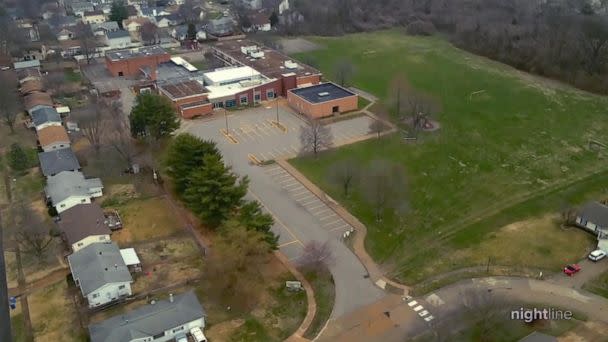
The waste materials from that processing, which contained traces of radium, uranium and thorium, were stored in open-air piles near the city's airport that reached 40 feet high. The storage site was located near Coldwater Creek, a tributary of the Missouri River that snakes through North St. Louis County.
MORE: Video Along The Creek Part 1: School closing reopens concerns about nuclear contamination
"Coldwater Creek … runs along the edge of the lot that was chosen to be the storage area for the materials," Verhoff explained. "And as a result of that, as runoff and wind would blow the materials, large amounts ended up in the creek itself and were carried then to the north through what became parts of North Saint Louis County."
In 1989, the U.S. Environmental Protection Agency labeled parts of North St. Louis a Superfund site, and eight years later, the Army Corps of Engineers took the lead on cleaning up portions of the contamination as part of the Formerly Utilized Sites' Remedial Action Program (FUSRAP).
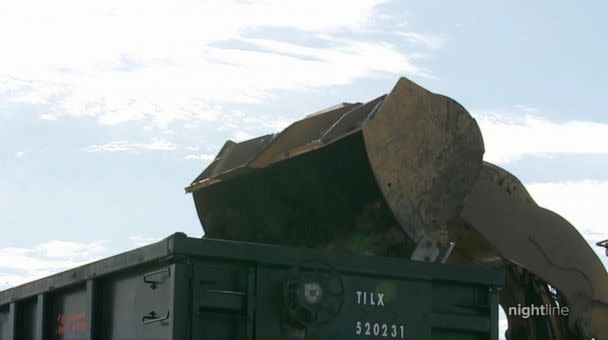
As part of the program, soil samples are tested and any contaminated soil is identified, dug up in a process called remediation and shipped to a facility in Idaho by railcars.
"It's over a million cubic yards that have already been cleaned up," Phillip Moser, FUSRAP Chief, told "Nightline." "Around 12,000 railcars."
The Corps initially focused on cleaning up primary storage sites -- locations where waste was kept for many years. After finishing that portion of the project, they began testing and remediating "vicinity properties," or locations where waste may have traveled, like Coldwater Creek, according to the Corps.
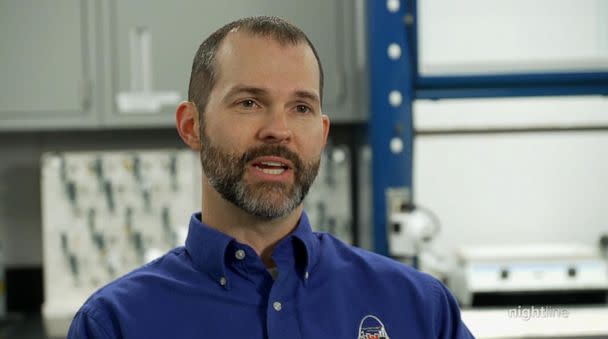
Moser says that after years of remediation in the community, most of their samples come back showing radiation at or below levels they believe to be safe.
"We've taken over 34,000 samples [and] 4% of those have come back above our… remediation goals," he said.
The Corps has until 2038 to fully remediate the area of North St. Louis within their FUSRAP boundaries.
At Jana Elementary, the Corps has acknowledged finding low levels of radiation located in a "hotspot" along the banks of the creek, which runs along the school's boundaries. However, they say that spot is isolated, underground and not a threat to human health, the Corps said.
But some parents at Jana Elementary are frustrated and worried the grounds are not safe for their children.
In April 2022, Ashley Bernaugh, the PTA president at Jana Elementary, worked with Christen Commuso, of the Missouri Coalition for the Environment (MCE), to file a Freedom of Information Act Request requesting both the Hazelwood School District, which oversees Jana Elementary, and the Army Corps of Engineers, turn over documents pertaining to testing along the creek and the school property.
When the pair received the documents in June 2022, they showed the Corps had informed the district they had found "the presence of low-level radioactive contamination on this property" in January 2022, at least five months before the Hazelwood school district made parents aware of the contamination, according to Commuso.
"Nightline" reached out to the Hazelwood School District and were told they had no further information to share.
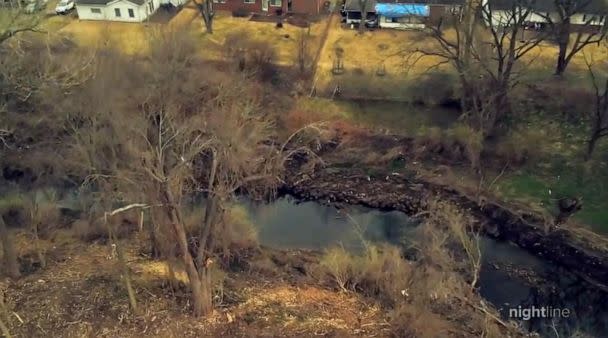
"To find out that potentially they were being poisoned or harmed. That's terrifying, especially because this has been going on for decades," Commuso told "Nightline."
Then, another report was released. This time from Boston Chemical, a group hired by a law firm working to build a class action lawsuit. Boston Chemical's report claimed that there was contamination inside the school at levels as high as 22 times the expected background level.
"Lead-210 levels were far in excess of the natural background…in the kindergarten play area… more than 22 times the expected background," the report states. "In addition, lead-210 was found in soils immediately adjacent to the school's basketball courts…more than 12 times the expected background."
MORE: Radioactive waste found at Missouri elementary school: Report finds
The district then commissioned its own study, using SCI Engineering, Inc. That group wrote that "from a radiological standpoint, Jana Elementary is as safe as any other school."
Finally, the Army Corps of Engineers returned to test inside the school in October and found that according to their standards, it is safe.
Moser and FUSRAP lead engineer Robin Parks were pressed by "Nightline's" Mireya Villarreal about the safety of the school and both reiterated that it was safe to send children.
"Would it be safe enough to send your children there?" Villarreal asked.
"Yes," Moser said.
"Yes, I would absolutely send my kids there," Parks said.
"There is contamination on the creek bank. We're not denying that," Moser added. "It is underneath the ground surface. So right now, no one is being exposed from it. You actually have to come in contact with it to be exposed."
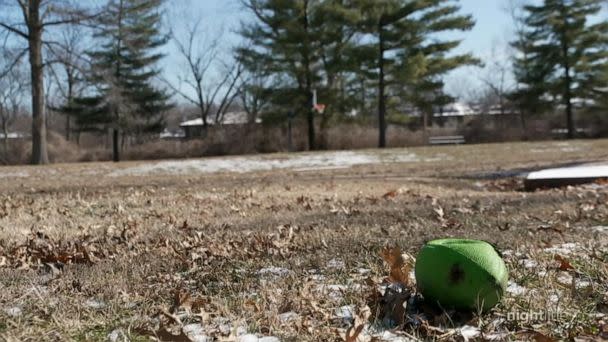
"We don't know what to trust because the information is not transparent," Jason Bell, the father of a Jana Elementary School student and PTA member told "Nightline. "And that was the main concern that was going on."
The district still chose to close the school in October 2022, and announced in March that there is currently "no expectation that Jana Elementary will reopen."
"There's a reason why we had to shut down the school. What is that reason?" Bell said.
Lawmakers, like Rep. Cori Bush, are now calling on the federal government to do more. Bush and Sen. Josh Hawley sent a letter to the Department of Energy demanding that all schools in the same district as Jana Elementary be tested and thoroughly cleaned.
MORE: Video Along The Creek Part 2: Lawmakers demand answers over radioactive waste in Missouri
"Low levels of radiation, with students… should not be OK," Bush told "Nightline." "Why put our children in a position to where there is a possibility of something that we just don't understand versus putting them in an environment where we know that they are safe?"

The school district has also requested to have all their buildings tested.
When asked about testing the schools, the Department of Energy said in a statement to "Nightline" that it "referred the board to the U.S. Army Corps of Engineers' St. Louis district, which can determine if there is a basis for investigation of any or all of Hazelwood School District properties."
The Hazelwood School District said in a statement to "Nightline" that it had no further information to share.
While this process continues, residents are left waiting for some answers about whether their homes are safe, and when the cleanup could be finished.
"Saint Louis stepped up to save the nation during World War II, and I believe that it's the nation's turn to step up and save Saint Louis," Commuso told "Nightline. "We just want this waste out of our community. And we shouldn't have to wait this long."
How a school shutdown resurrected concerns over nuclear contamination in North Saint Louis originally appeared on abcnews.go.com
